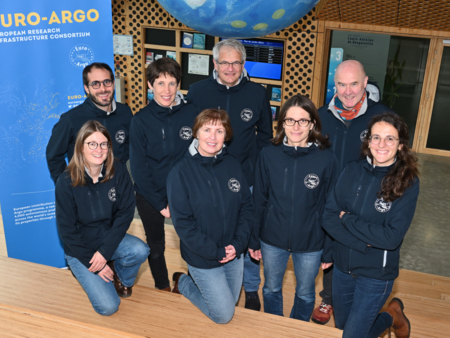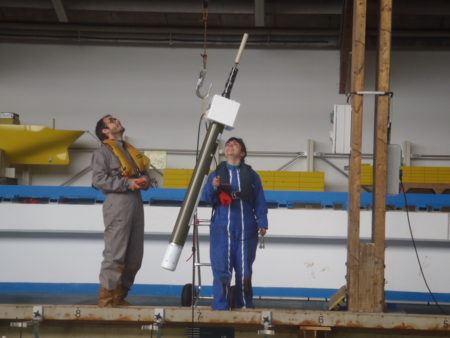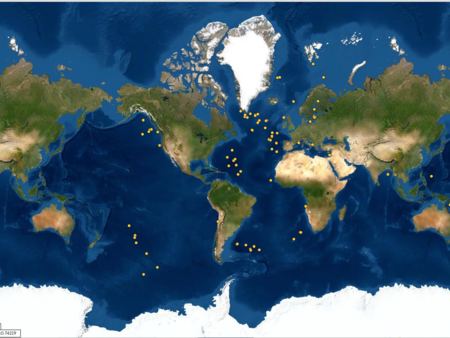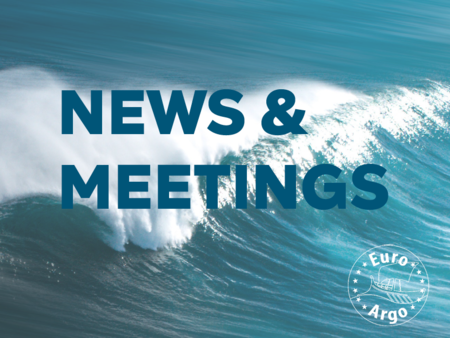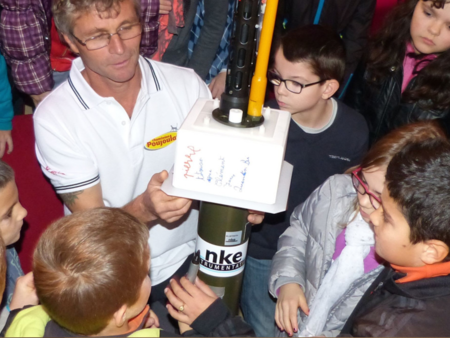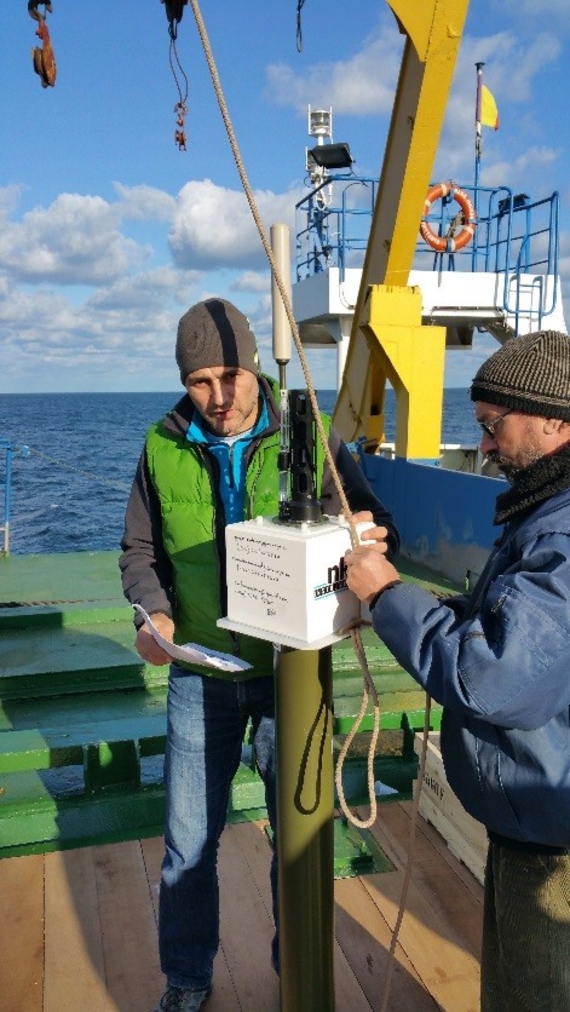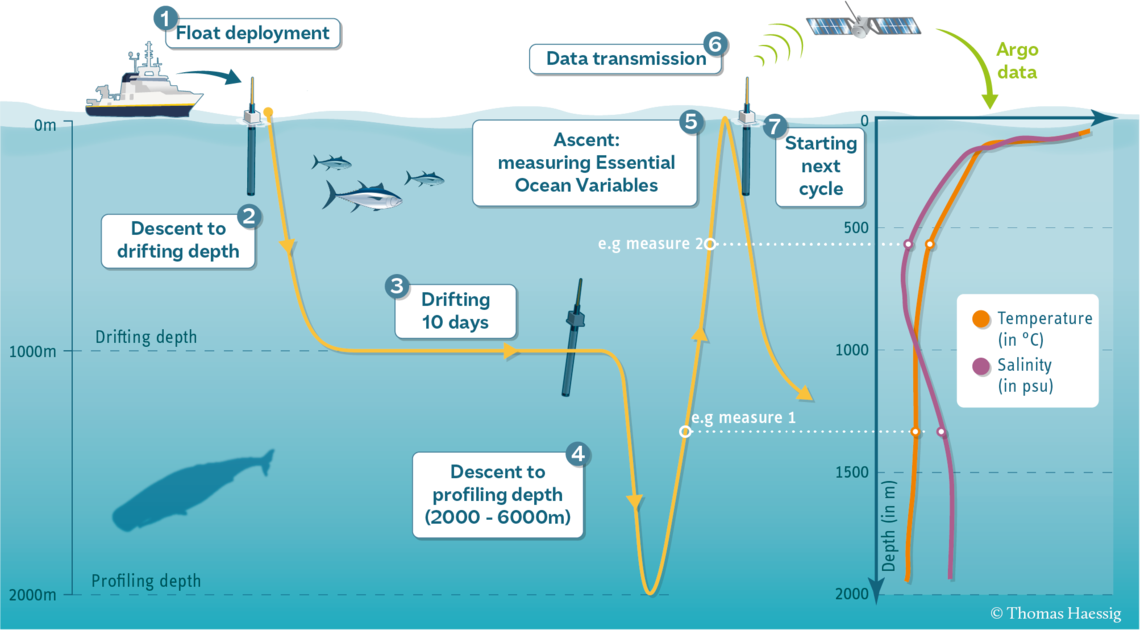Euro-Argo in brief
Ocean observations
There is an increasing concern about global change and its regional impact. For example, sea level is rising at an accelerating rate of 3 mm/year, Artic sea ice cover is shrinking and high latitude areas are warming rapidly. These effects are caused by a mix of long-term climate change and natural variability. Lack of sustained observations of the atmosphere, oceans and land has hindered the development and validation of climate models.
Concerns about the lack of observations of key factors that influence earth’s climate led governments to form the Global Earth Observation System of Systems (GEOSS) in 2003. In Europe there is an initiative on global monitoring for environment and security (Copernicus). GEOSS and Copernicus aim to provide the measurements needed to make predictions of how global change will influence weather, climate, energy, water, health and disasters. The climate and ocean components of GEOSS are delivered by the Global Climate Observing System (GCOS), the Global Ocean Observing System (GOOS) and its European declination EuroGOOS.
The Argo programme
The international Argo programme (for more details, see http://www.argo.ucsd.edu/) was initiated in 1999 as a pilot project endorsed by the Climate Research Program of the World Meteorological Organization, GOOS, and the Intergovernmental Oceanographic Commission. The Argo network is a global array of more than 3500 autonomous instruments, deployed over the world ocean, reporting subsurface ocean properties to a wide range of users via satellite transmission links to data centres.
Argo Float about to be deployed in the Black Sea © Sorin Balan 2016 | |
A typical Argo float cycle: The float drifts at 1000m depth. Every 10 days it dives down to 2000m, turns its sensors on and start measuring while getting back to the surface. Once at surface, it turns its sensor off, sends its data to Data Centers using satellite communications, and then dives back to 1000m for a new cycle. | |
Thanks to an international collaboration of more than 25 countries started in 2001, the Argo programme succeeded in setting up the first-ever global in-situ ocean observing network in the history of oceanography. In 2007, Argo reached its initial target of 3000 profiling floats. The Argo floats being battery powered with a design life of between 4 to 5 years, there is a crucial necessity to maintain the target array, by regularly deploying new floats. Euro-Argo In that framework, 12 European countries gathered in 2008 within the Euro-Argo project with a common aim to provide an optimized and sustained European contribution to Argo by deploying 250 floats per year. After a 3-year successful preparatory phase, the Euro-Argo European Research Infrastructure Consortium (ERIC) was established in 2014 and is now able to take up this challenge by responding also to specific European interests for marginal seas, high latitudes, biogeochemical measurements and depths greater than 2000m. | |

